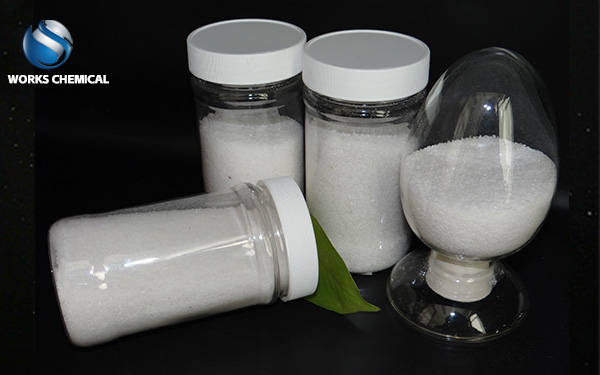
Leather sludge is classified as hazardous waste due to its content of heavy metals such as chromium, sulfides and high-concentration organic matter. Its treatment should take into account reduction, harmlessness and resource utilization. Sludge enhancers, through the synergistic effect of chemical modification and physical strengthening, have demonstrated significant technical advantages and environmental benefits in the treatment of leather sludge, and have become one of the key technologies for the transformation and upgrading of the industry.

I. Technology Application: From Hazardous Waste Disposal to Resource Utilization
Technical pathways of Works Chemical enhancers
Its independently developed sludge enhancer achieves efficient dewatering through the following mechanisms:
Colloidal structure destruction: Cationic polymers neutralize the negative charges on the surface of sludge particles, compress the double electric layer, and release bound water.
Cell wall breaking and water release: The water-releasing agent and the cell wall breaking agent work together to reduce the water content from over 90% to 40%-60%, breaking through the dehydration bottleneck of traditional calcium, iron and aluminum salt agents.
Rheological property optimization: Sludge viscosity is reduced by 60%-70%, energy consumption for sludge feeding and pumping is cut by 40%, and the processing capacity of the filter press is increased by 100%-500%.
This technology has been applied in many tannery enterprises. Combined with plate and frame filter presses, the moisture content of the mud cake is stably below 60%, which is significantly better than the natural drying method (it takes one month to reach a moisture content of 20%).
Ii. Effect Evaluation: Dual Improvement in dehydration performance and Environmental Benefits
Dehydration efficiency revolution
Moisture content breakthrough: Traditional methods find it difficult to break through 80% moisture content. The combination of sludge enhancers and high-pressure filtration can reduce it to below 60%, releasing more bound water.
Shortened processing cycle: The filtration time is reduced by more than 50%, and the equipment utilization rate is significantly improved.
Heavy metal fixation: The sludge enhancer promotes the combination of heavy metals such as chromium with organic matter, reduces leaching toxicity, and complies with the "Hazardous Waste Identification Standard" (GB 5085.3-2007).
Pollution control effectiveness
Leachate reduction: Avoid the risk of leachate polluting groundwater caused by natural drying;
Greenhouse gas reduction: Carbonization treatment reduces methane emissions by approximately 60% compared to composting.
Odor suppression: The sealed treatment process combined with alkaline liquid spray has increased the recovery rate of sulfides to over 90%.
Iii. Cost-benefit Analysis: Equal Emphasis on cost reduction and efficiency improvement as well as resource benefits
Direct cost savings
Chemical cost: The cost of treating 1 ton of sludge is reduced by 30 to 50 yuan compared with the traditional lime method.
Energy consumption reduction: The filtration time is shortened, and the power consumption per ton is reduced by 10% to 15%.
Reduced equipment maintenance: The clogging rate of filter cloth drops by 80%, and the annual maintenance cost is reduced by approximately 20%.
Resource utilization income
Building material substitution: For every ton of sludge used to make bricks, 0.3 cubic meters of clay can be saved and 0.2 tons of carbon emissions can be reduced.
Social benefits
Compliance risk reduction: Achieve compliant transportation of hazardous waste to prevent illegal dumping;
Land resource conservation: Compared with landfill, resource utilization reduces land occupation by more than 90%.
Iv. Challenges and Countermeasures: Technological Optimization and Policy Synergy
Improvement in technical adaptability
Formula customization: Adjust the components of the enhancer according to the chromium content in the sludge to avoid secondary pollution from heavy metals.
Pre-treatment enhancement: By integrating ultrasonic or microwave pre-treatment, the dehydration efficiency is further improved.
Long-term environmental risk monitoring
Biochar stability: Monitor the long-term leaching risk of heavy metals to ensure the safety of soil application;
Carbon emission accounting: Improve the carbon footprint assessment throughout the entire life cycle and strive for carbon trading profits.
V. Conclusion: Technology empowers the modernization of leather sludge treatment
Through technological innovation, the sludge enhancer has transformed leather sludge from an environmental burden into a resource treasure, achieving a "synergistic effect of pollution reduction and carbon emission reduction". In the future, with the improvement of policies and technological iterations, its application scenarios will be further expanded, providing core support for the green transformation of the leather industry. Enterprises need to keep up with technological trends, combine the characteristics of their own sludge, and select the most suitable type of sludge enhancer to provide the most appropriate solution, so as to achieve a win-win situation of economic and environmental benefits.